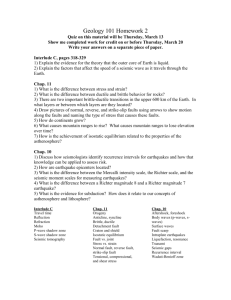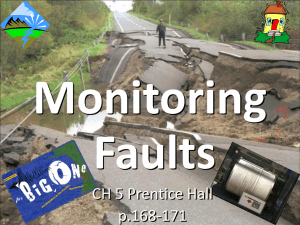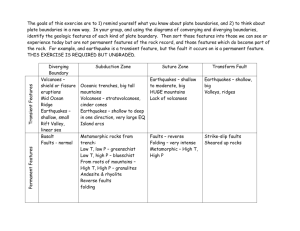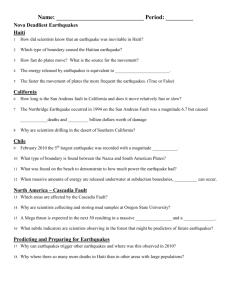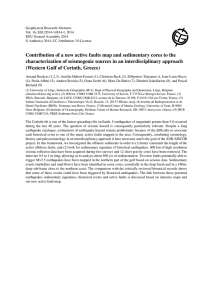S_Bydlon_RA10
advertisement
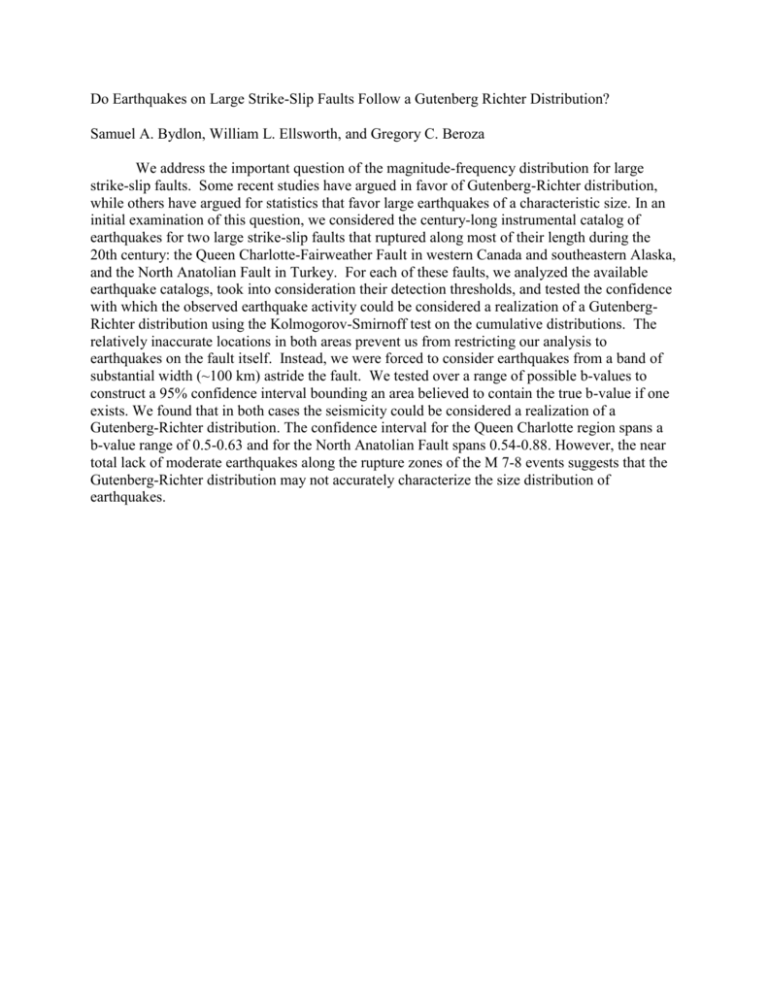
Do Earthquakes on Large Strike-Slip Faults Follow a Gutenberg Richter Distribution? Samuel A. Bydlon, William L. Ellsworth, and Gregory C. Beroza We address the important question of the magnitude-frequency distribution for large strike-slip faults. Some recent studies have argued in favor of Gutenberg-Richter distribution, while others have argued for statistics that favor large earthquakes of a characteristic size. In an initial examination of this question, we considered the century-long instrumental catalog of earthquakes for two large strike-slip faults that ruptured along most of their length during the 20th century: the Queen Charlotte-Fairweather Fault in western Canada and southeastern Alaska, and the North Anatolian Fault in Turkey. For each of these faults, we analyzed the available earthquake catalogs, took into consideration their detection thresholds, and tested the confidence with which the observed earthquake activity could be considered a realization of a GutenbergRichter distribution using the Kolmogorov-Smirnoff test on the cumulative distributions. The relatively inaccurate locations in both areas prevent us from restricting our analysis to earthquakes on the fault itself. Instead, we were forced to consider earthquakes from a band of substantial width (~100 km) astride the fault. We tested over a range of possible b-values to construct a 95% confidence interval bounding an area believed to contain the true b-value if one exists. We found that in both cases the seismicity could be considered a realization of a Gutenberg-Richter distribution. The confidence interval for the Queen Charlotte region spans a b-value range of 0.5-0.63 and for the North Anatolian Fault spans 0.54-0.88. However, the near total lack of moderate earthquakes along the rupture zones of the M 7-8 events suggests that the Gutenberg-Richter distribution may not accurately characterize the size distribution of earthquakes.

